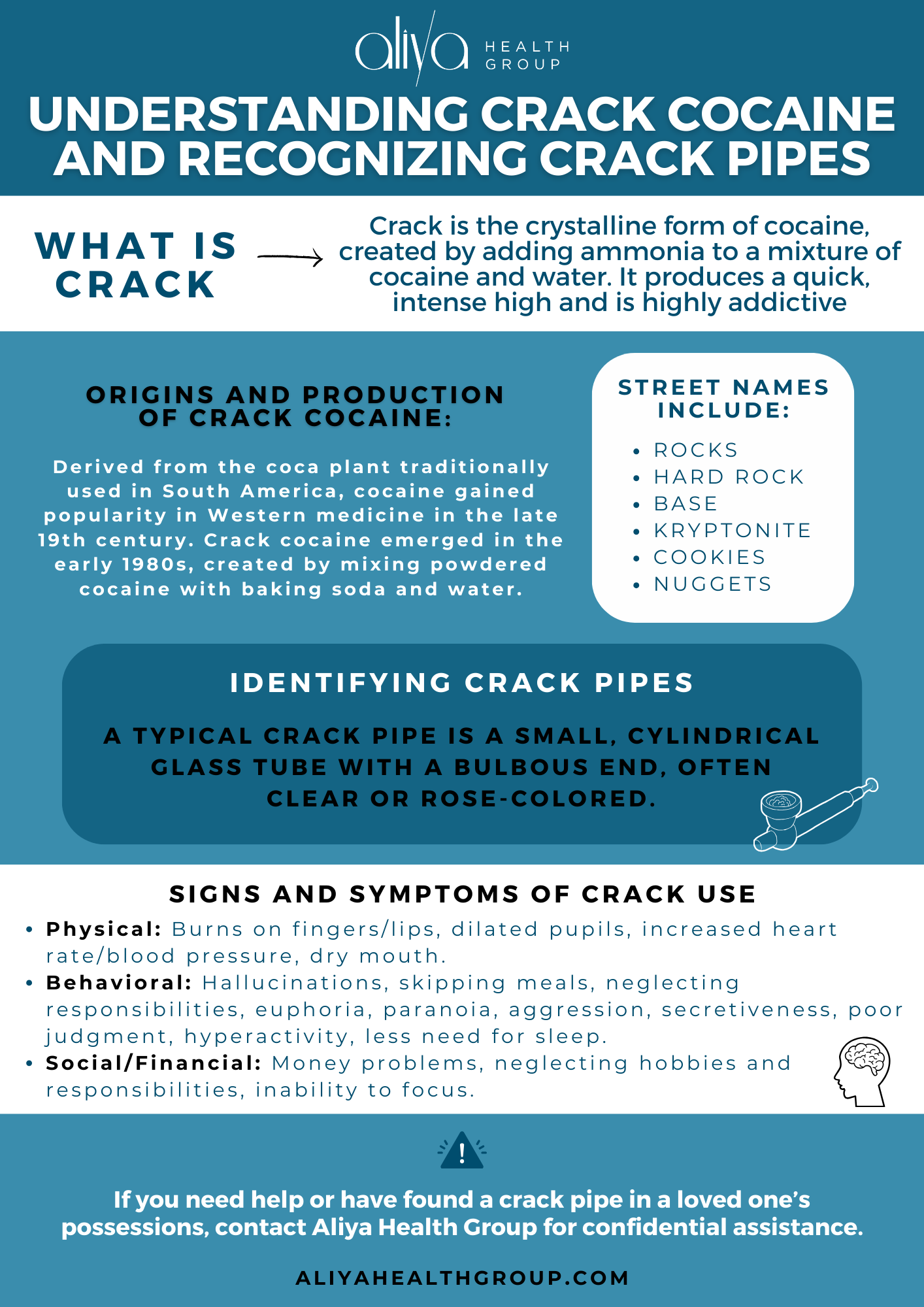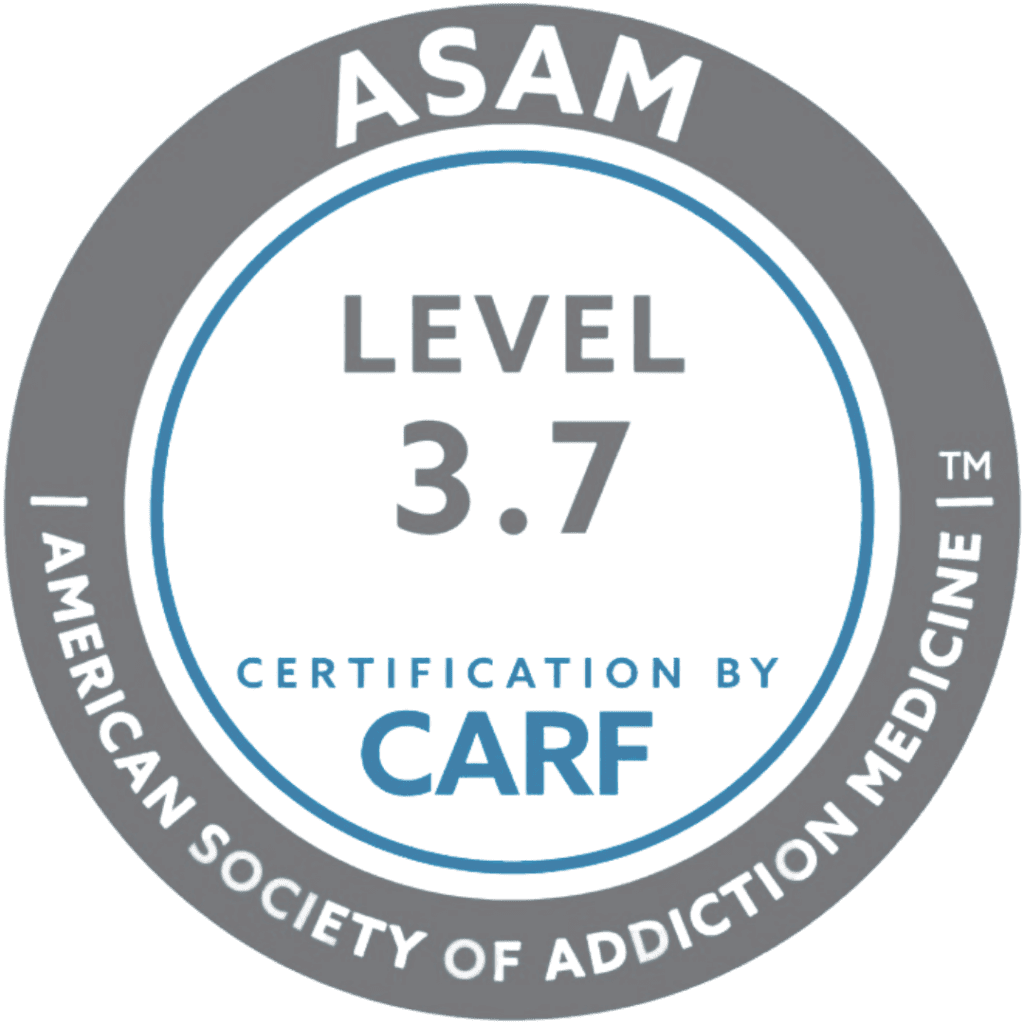Have you ever found yourself wondering, “What do crack pipes look like?” or perhaps discovered a strange item among a loved one’s possessions? If so, you’re not alone. From the ins and outs of crack itself to what a crack pipe actually looks like, we’ll provide the insight you need to build a better understanding.
What Is Crack?
Crack is the crystalline (solid) form of cocaine, hence the name crack cocaine. Crack is made by adding ammonia to a mixture of cocaine and water, creating a milky white solution known as a freebase. This combination elicits a quick, intense high. The powerful euphoric effects, while incredibly short-lived, are the reason why crack is considered the most addictive form of cocaine.
To truly understand why people abuse crack, it’s important to understand its origins, production, and how it differs from its powdered counterpart, cocaine.
Get confidential help from our addiction and mental health treatment facilities located across the United States. Call to join one of our quality programs today!
Speak With Our Admissions TeamOrigins and Production of Crack Cocaine
Crack, like cocaine, comes from the coca plant. For centuries, indigenous people in the Andean region of South America had been using coca leaves. Traditionally, these leaves were chewed or brewed into tea for their stimulant effects.
In the late 19th century, cocaine gained popularity in Western medicine and was used as an ingredient in various tonics and elixirs. Sigmund Freud, the Austrian neurologist and founder of psychoanalysis, even praised the drug for its stimulating effects. However, by the early 20th century, concerns about its addictive nature and harmful effects began to emerge, leading to legal restrictions on its use.
The 1970s saw a surge in the recreational use of cocaine in its powdered form. It was associated with the party scene and glamorized in popular culture. However, the transformation of cocaine into crack cocaine can be traced back to the early 1980s.
The development of crack cocaine is often linked to changes in the drug market and the efforts of drug traffickers to maximize profits. Crack cocaine is created by converting powdered cocaine into a smokable form by mixing it with baking soda and water. This process produces small, solid crystals or “rocks” of crack cocaine, which can be smoked. Smoking crack delivers the drug to the brain more quickly than snorting powdered cocaine, producing a more intense and immediate high.
Common Slang and Nicknames for Crack
Crack goes by many different slang terms and nicknames, with “rock,” “hard,” “base,” or simply “crack” being commonly used. Local lingo may introduce additional street names, making it important to stay informed about regional terms.
Distinguishing Crack from Cocaine
While both substances come from the same plant, crack and cocaine differ significantly. To create crack, cocaine hydrochloride undergoes a chemical process, usually involving the addition of baking soda or ammonia. This transformation results in small, rock-like crystals.
Cocaine is typically in a powdered form, meant for snorting or injecting. In contrast, crack, the freebase form of cocaine, is ideal for smoking. The rapid onset of effects distinguishes crack, providing a quicker and more intense high compared to its powdered counterpart.
What Is Crack Paraphernalia?
Crack use is often accompanied by specific paraphernalia. Steel wool or Chore Boy, used as a filter in the pipe, is a telltale sign. Lighters with sooty residue and small plastic bags may also be present, further indicating crack use. Recognizing these additional items can provide crucial confirmation.
What Does a Crack Pipe Look Like?
Identifying a crack pipe becomes crucial if you’re concerned about a loved one’s potential use of the drug. Crack pipes, with their unique characteristics, come in various shapes and sizes.
A typical crack pipe is a small, cylindrical tube, often made of glass. The color may vary, with a clear or rose crack pipe being most common. You’ll notice the distinctive bulbous end where the crack is heated and vaporized. This end, referred to as the “rose,” is a key feature in identifying a crack pipe.
Alternative Names for Crack Pipes
While “crack pipe” is the commonly recognized term, other names exist in street culture, including, “stem,” “straight shooter,” or simply “pipe.”

Looking for quality treatment for substance abuse and mental health that’s also affordable? Aliya Health Group's treatment facilities accept most major insurance providers. Get a free insurance benefits check now!
Check Your CoverageWhat Are the Signs and Symptoms of Smoking Crack?
Individuals under the influence of crack cocaine may show a range of physical, behavioral, and psychological indicators.
Physical Signs of Crack Addiction:
- Dilated Pupils: Crack cocaine often causes pupils to dilate, resulting in noticeably larger-than-usual eye size.
- Increased Energy: Users may display heightened energy levels, restlessness, and hyperactivity.
- Weight Loss: Persistent crack use can lead to a significant decrease in appetite, resulting in weight loss.
- Burns on Fingers or Lips: The process of smoking crack involves applying direct heat to the pipe, potentially resulting in burn marks on fingers or lips.
- Respiratory Issues: Chronic crack smoking can lead to respiratory problems, including coughing, shortness of breath, and chest pain.
Behavioral Signs of Crack Addiction:
- Erratic Behavior: Under the influence of crack, individuals may display unpredictable and erratic behavior, characterized by impulsivity and poor decision-making.
- Financial Strain: Maintaining a crack habit can lead to financial instability, with users constantly in need of funds.
Psychological Signs of Crack Abuse:
- Intense Euphoria: Crack induces a powerful sense of euphoria, often accompanied by increased confidence and talkativeness.
- Paranoia: Users may experience heightened paranoia and anxiety, leading to social withdrawal and isolation.
Crack Addiction Treatment at Aliya Health Group
Recovery from crack addiction recovery is possible. At Aliya Health Group, we’re ready to support you or your loved one using one of our addiction treatment programs. Everyone is different, so recovery timelines vary, too. Detox is the first step, and it typically lasts a few days. Things that impact that time include:
- Length of time crack is used
- Amount crack taken each time
- Frequency of use
- Method used to take crack
- Presence of underlying medical or mental health issues
- Other drug abuse or alcohol addiction
The first step in treatment is usually detox, which can last for several days to a week. During detox, you’ll typically experience withdrawal symptoms such as cravings, fatigue, and depression.
After detox, therapy begins, which may last for several weeks to months. Therapy focuses on identifying the underlying causes of addiction and developing coping skills to deal with triggers and cravings. In addition, you’ll participate in group therapy sessions and may receive medication to help manage your symptoms. After completing treatment, it’s best to continue attending support groups and meeting with your therapist on a regular basis to prevent relapse.
Recovery itself is a lengthy process. Many people consider it a lifelong endeavor. That’s why most treatment professionals recommend ongoing therapy, peer support, or groups. If you’ve found a crack pipe in a loved one’s possessions or need help for yourself, Aliya Health Group is here for you.


















